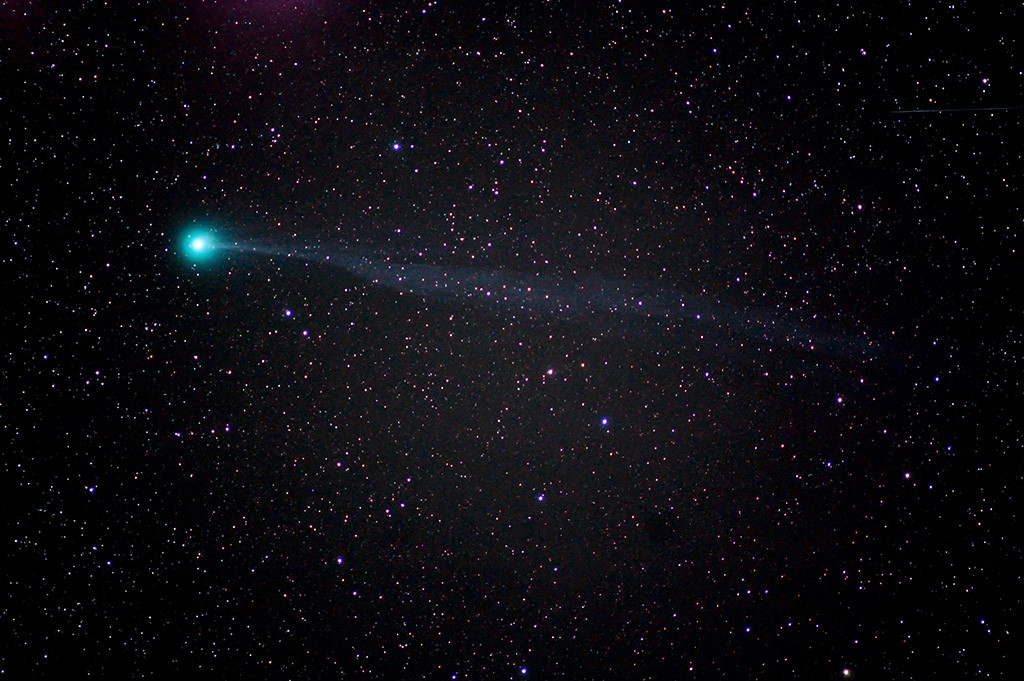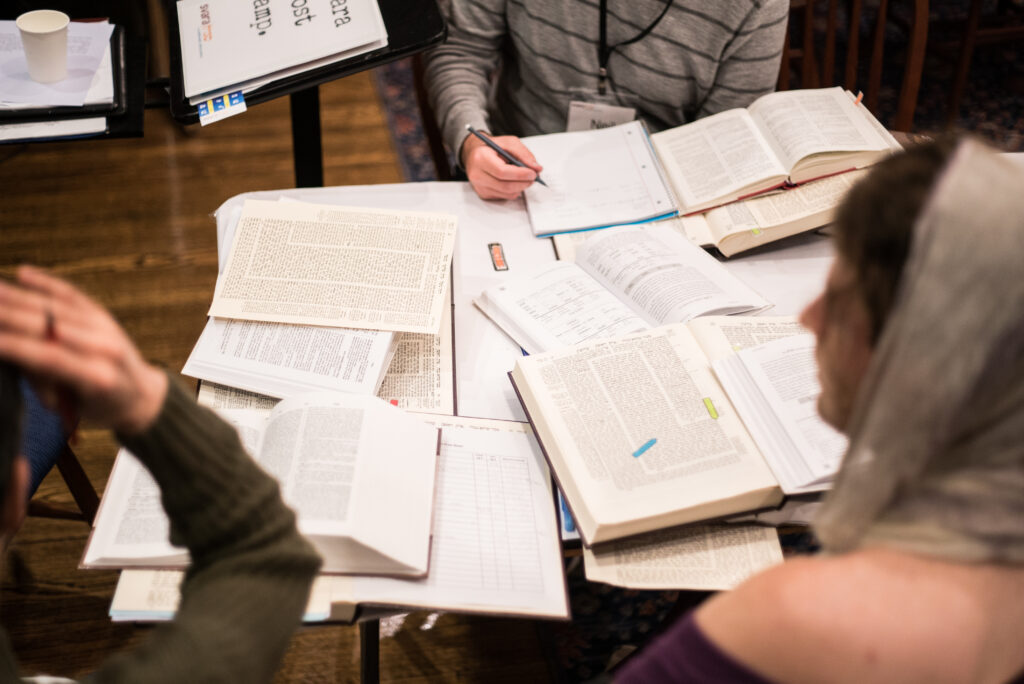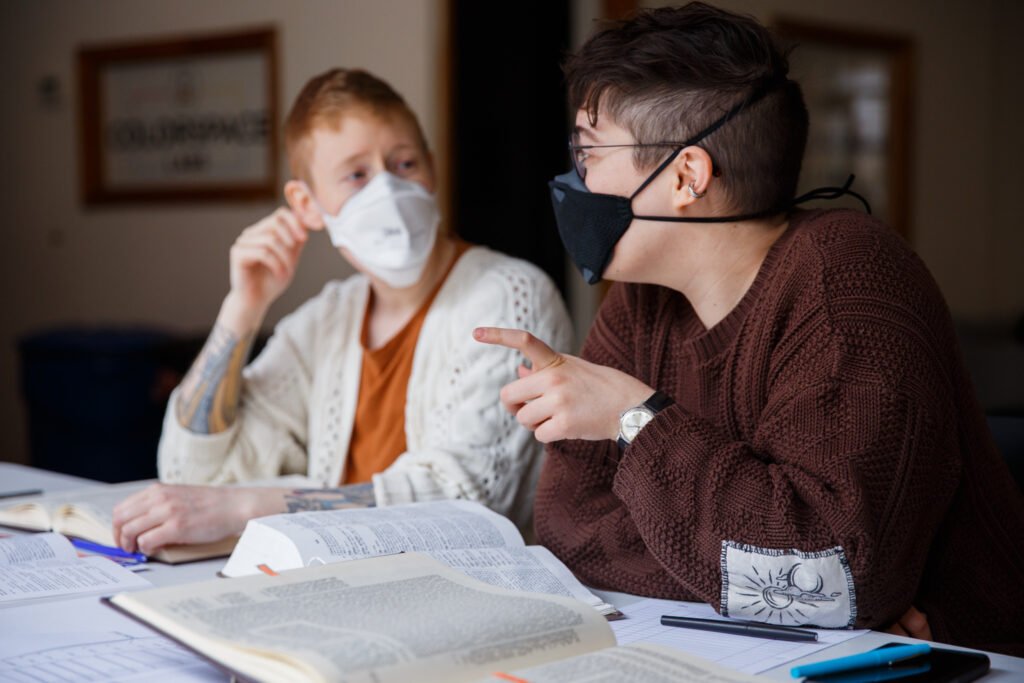An astrophoto of C/2011 W3 (Lovejoy), taken by Kendra’s grandfather, Bill.
בָּרוּךְ אַתָּה יי אֱלקֵינוּ מֶלֶךְ הָעולָם אֲשֶׁר בִּדְבָרו מַעֲרִיב עֲרָבִים
Baruch atah Hashem, Elokeinu Melech ha’olam, asher bidvaro ma’ariv aravim
Blessed are you, G!d, ruler of the universe, whose word brings the evening into being.
I love the dark, thanks in no small part to my astronomer grandfather. I have fond memories of setting up telescope equipment in fields and forests, accidentally getting my fingerprints all over lenses and chroma filters. I love the way darkness calls us to a deepened sense of awareness and holds the possibility for restoration. It was in the dark that I learned how to listen and feel my way through the world around me. This love for the dark helps me find meaning in winter’s long, chilly nights.
Darkness gives cover. Darkness is transition. Darkness is magic.
In the decades leading up to the Civil War, the vast, elaborate network of the Underground Railroad saw tens of thousands of enslaved Black people through to freedom. For many, Detroit, the city I call home, was the last stop. Known by the codename, Midnight, and separated from so-called Canada by the Detroit River, the city served as an in-between place, perched on the cusp of freedom.
Darkness gives cover. Darkness is transition. Darkness is magic.
In Exodus, too, our foundational liberation narrative, darkness was only a plague to those who could not, or rather, refused to see the humanity of the Israelites. And through Moses’ retelling of our experience of revelation at Sinai, we learn that Hashem’s voice emanated from the darkness as we prepared to receive the Torah.
Darkness gives cover. Darkness is transition. Darkness is magic.
All year round, but especially in winter, we are bombarded, with calls to seek out light and to banish darkness. And frankly, I’m not interested. As with all things, race makes itself known in our language and symbolism. For centuries, white supremacist logic has tried to convince us that all that is right is white and light, and that darkness is void and ungodly. And yet, I carry a deep knowing in my body that that could not be further from the truth. In his groundbreaking text, A Black Theology of Liberation, Rev James Cone teaches us that,
“Theology cannot be indifferent to the importance of blackness by making some kind of existential leap beyond blackness to an undefined universalism. It must take seriously the questions which arise from black existence and not even try to answer white questions, questions coming from the lips of those who know oppressed existence only through abstract reflections.” 1
For me, taking my own Black existence seriously means that it is not enough to rely on universal metaphors for light during this time. If, as Ashon Crawley writes, “all we have is metaphor,” then we have got to attune ourselves to different ways of thinking about the dark, keeping blackness at the center.2
Thankfully, we are not the first — nor will we be the last — to grapple with untangling anti-black rhetoric from our understanding of the natural world. There is a whole legacy of Black political and religious thought to hold us in this enterprise. The work that lies ahead of us is what Crawley calls “think[ing] otherwise.”3 I understand thinking otherwise as the process of taking stock of what lies in front of us and imagining ourselves toward new, liberatory conclusions. Darkness is as old as G!d G!dself. Above us at night and below us in the depths of the oceans and the earth’s layers, darkness is always with us, thank G!d, and it is teeming with life and possibility.
This year, in a celebration of a thick, rich, overflowing darkness, I will be lighting my Chanukiah in the tradition of Beit Shammai; beginning with eight candles, and welcoming a little more darkness each night.4
As we wait for nightfall to bring us into Shabbat, I’ll leave you with the words of my rebbe, Lucille Clifton.
is a black shambling bear
ruffling its wild back and tossing
mountains into the sea
is a black hawk circling
the burying ground circling the bones
picked clean and discarded
is a fish black blind in the belly of water
is a diamond blind in the black belly of coal
is a black and living thing
is a favorite child
of the universe
feel her rolling her hand
in its kinky hair
feel her brushing it clean
_______
References and citations:
The image for this HOTS is an astrophoto of C/2011 W3 (Lovejoy), taken by Kendra’s grandfather, Bill.
1 James Cone, A Black Theology of Liberation (1970), pg 38
2 Ashon Crawley, “Stayed | Freedom | Hallelujah,” Otherwise Worlds: Against Settler Colonialism and Anti-Blackness (2020), pg 32
3 Ibid, pg 32
4 Talmud Bavli, Shabbat 21b







